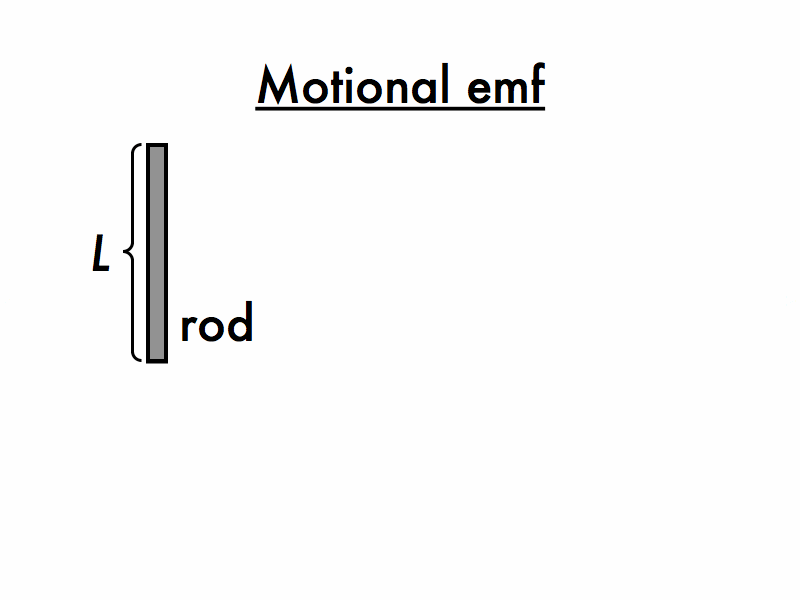Electromagnetic Induction can induce EMF through a conductor as long as it remains moving in a Magnetic Field. In the case of a moving conductor in a stationary magnetic field, the Induced EMF is called motional EMF
The motional EMF is generated through the Magnetic Field. The resulting Induced Electric Field is considered an effect of the magnetic field.

Definition
Moving Conducting Rod in a Magnetic Field
Note
- = Motional Induced EMF (in )
- = Magnitude of Magnetic Field (in )
- = Velocity of moving rod (in )
- = Length of the rod (in )
Derivation - Via Lorentz Force and Hall Effect
Assume we have a straight conducting neutral rod in Electrostatic Equilibrium.
If we move this rod into a Magnetic Field, we have a Magnetic Force applied to the electrons, given by:
Let’s assume the magnetic field is perpendicular to the motion. Then the force is given by the Right Hand Rule:
This causes all the electrons to build up at a direction, creating a charge inequality. This causes an Electric Field to be generated.
This is NOT the Induced Electric Field
There’s another electric field that happens outside the conductor, called the Induced Electric Field, which is both non-conservative and forms loops. THE ONE HERE IS A NORMAL ELECTRIC FIELD, CAUSED BY A SEPERATION OF CHARGE.
#wtf which ones are there.
Now, since there is both an electric and magnetic field, the electrons experience the Lorentz Force:
Stupid Eddy Currents
Technically, there’s actually another force at play. Very, very small loops of current generate inside the rode due to the Induced Electric Field and these currents cause their own magnetic field. For the sake of your sanity and mine, we’re going to ignore them.
The following observances are actually just another case of Hall Effect, because we have a magnetic field and a electric field.
As long as the magnetic field is stronger, electrons continue to move, making the resulting electric field stronger. Eventually, these fields reach an equilibrium, when , making .
The electric force induces a change in electrical potential, i.e. Voltage:
, where is simply the length of the rod. Once the electric field is in equilibrium with the magnetic field, it remains constant (provided both magnetic field and velocity are constant). This gives:
Remember that we said the electric field is of equal magnitude, but opposite sign (in order to cancel out):